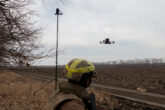January 01, 2018
From 'flags and footprints' to having a routine presence in space
President Trump’s signing of Space Policy Directive 1 once again gives NASA a mission adjustment and beneficial goals. The directive recommits NASA to:
“Lead an innovative and sustainable program of exploration with commercial and international partners to enable human expansion across the solar system and to bring back to Earth new knowledge and opportunities.”
With the recent successes by the commercial sector, the space domain is no longer for governments by governments: NASA and the U.S. government require a fundamental change in tactics. While activities in space will always remain linked to Earth, shifting their “center” and expanding infrastructure from the surface of the Earth into Earth’s orbits and beyond by efficiently leveraging commercial capabilities is key to beginning the transition from “flags and footprints” to routine activities and presence in space.
“One mission, one destination” is the typical strategic mindset common to NASA’s science and human exploration missions, which results in developing required capabilities from scratch (e.g. SkyCrane) or looking at reusing existing technologies for other mission uses with minimal design change (heritage technology is preferred assuming that it drives down mission costs, a fact not always true, especially if such capabilities do not exist anymore — e.g. Orion TPS).
Read the full commentary in The Hill.
More from CNAS
-
Defense / Transatlantic Security
When Defense Becomes Destruction: Austria-Hungary’s Mistake and Ukraine’s RiskThis article was originally posted on War on the Rocks. The southeastern Polish city of Przemyśl, with its elegant 19th century Habsburg-era train station, remains one of the ...
By Franz-Stefan Gady
-
Defense / Transatlantic Security
Ukraine’s Catch-22 MomentThis article was originally published in the Financial Times. In Joseph Heller’s wartime classic, Catch-22, the protagonist Yossarian seeks out the US army surgeon Doc Daneeka...
By Franz-Stefan Gady
-
CNAS Insights | Budgetary Own Goals Undermine “Speed and Volume”
On November 7, Secretary of Defense Pete Hegseth laid out a plan to overhaul the Department of Defense’s (DOD’s) acquisition system. Placing an emphasis on delivering new capa...
By Philip Sheers, Carlton Haelig & Stacie Pettyjohn
-
Drones: Who Is Making the New Weapons of War?
From Ukraine and Russia to Gaza and Sudan, drones have become a key weapon of war. Which companies are making them, and profiting from this rapidly expanding but controversial...
By Stacie Pettyjohn




